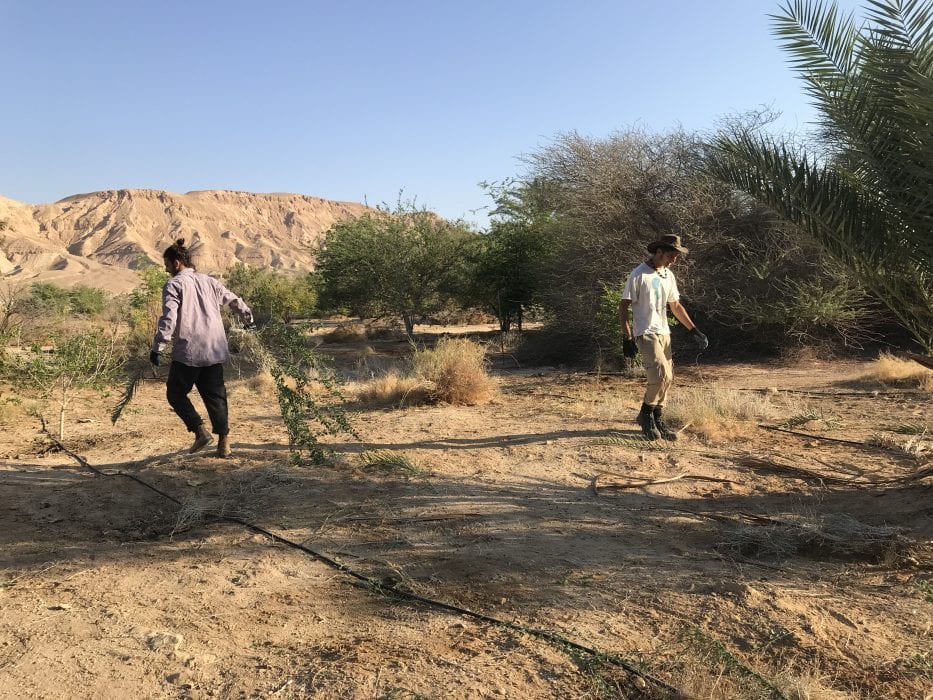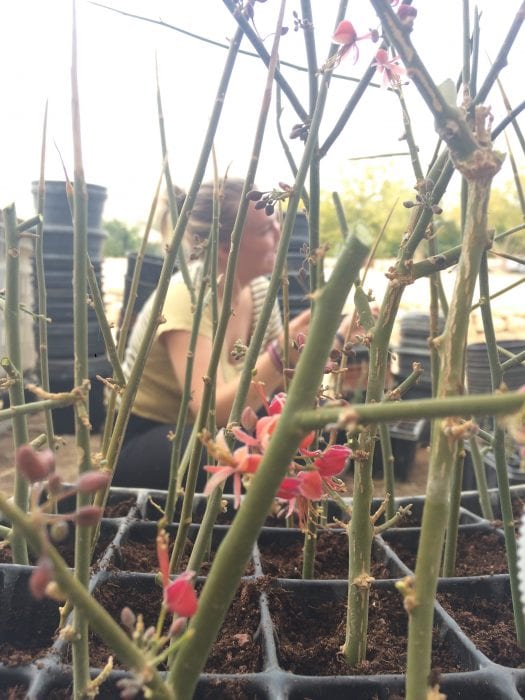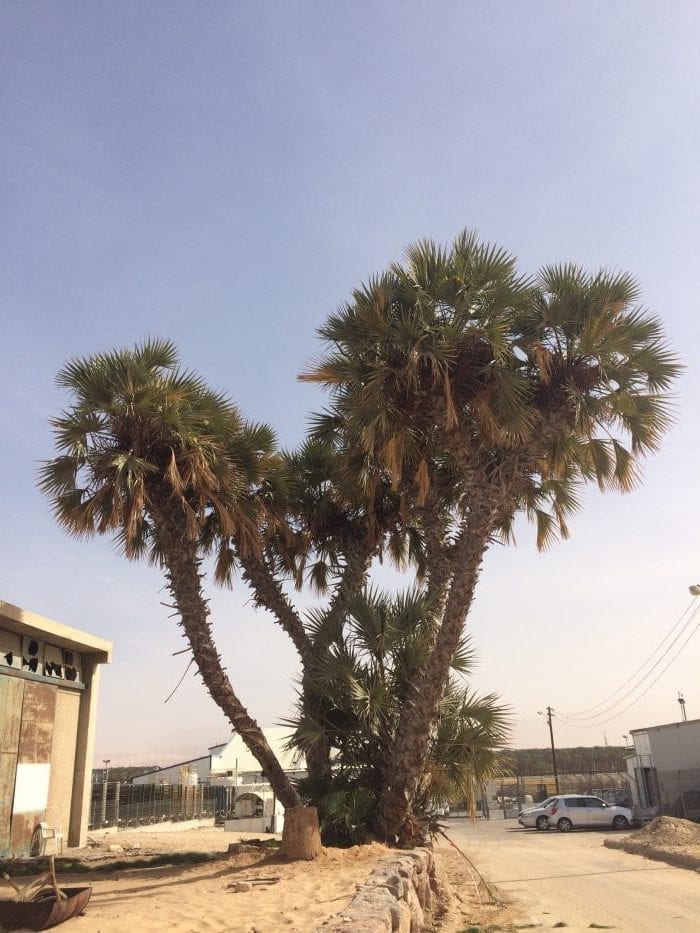צוות
איליין סולווי
מרכז לחלקאות בת-קיימא elaine.solowey@arava.org
יאיר ואלה
מרכז לחלקאות בת-קיימא yair@arava.org

גן מקלט לצמחי מדבר נדירים בסכנת הכחדה
הגן הוקם בשיתוף פעולה עם מיזם התיירות 'קרן קולות' של קיבוץ קטורה. גן השימור מקדם חינוך, תיירות, וחקלאות מדברית, בכך שהוא יוצר נווה מדבר של צמחים מגוונים ממקור מקומי, תנ"כי ובינלאומי. רבים מהזנים הם נדירים או בסכנת הכחדה, רבים מושכים ציפורים וחיות בר אחרות, ואחרים מייצגים אפשרויות פיתוח חקלאי לעתיד. פרויקט זה נמצא כרגע בשלבי הפיתוח הראשוניים שלו.

Capparis decidua
The leafless caper has all but disappeared from the landscape despite the fact that the plants' habitat was in extremely saline and arid areas that were not used for agriculture or road building. Remaining deciduous caper are found in protected areas. While some well-established individuals survive in their native region, there are no young plants. The sheer lack of sprouting seeds and information about how they survive as young plants is a mystery to be solved if the species will be saved from extinction.

Ficus palmate
This small tree, also called Ficus psuedosycamorus, is a small desert fig species that has been used to treat gangrene. Unsustainable harvesting likely accounts for the population decline. In Israel only two known wild individuals remain; a sharp decline in population has spread to Sinai and Jordan. Luckily, the tree is relatively easy to propagate.

Doum palm
The Doum palm grows only at Ein Evrona, a seasonal water drainage within a nature reserve threatened by a recent oil spill. This region is threatened by the development of the new Ramon International Airport of Eilat. The few trees remaining do produce viable seeds. Some suspicions about why they do not self-propagate could be related to the oil spill and its effect on the soil layers. The entire species needs a safe place to survive until the trees' role in the ecosystem can be better understood and appreciated. The doum palm is known for its medicinal uses derived from the nut.

Cordia sinensis
The grey leaved cordia was once staple sustenance for the hungry migrating birds that crossed north from the Sahara and Red Sea, arriving to the Arava Valley. The loss of these trees is unexplained but the consequences of their population decline are obvious. Previous propagation and redistribution projects of the cordia in partnership with the Israel National Fund (KKL) and the International Birding and Research Center Eilat (IBRCE) proved successful for attracting and feeding both migrating and local bird species. Experiments in propagation have proven successful. As well as planting this species in the Shelter Garden, we are optimistic in our partnerships with other regional bird reserves and shelterbelt plantings around kibbutzim in the Arava to increase distribution.

Pistachia atlantica
The terebinth tree is a relict species from the last ice age. Surviving only at elevations approaching 1000 meters or more, the trees are valuable as a medicinal plant, food and shelter for wildlife; it makes a strong rootstock to pairs with other pistachio species, including the domesticated nut tree. This species needs to be propagated, distributed to botanical gardens, and redistributed in the wild. Continued research will be carried out on the medicinal value of its sap, and how to use it in treatment of several diseases.
The above research contributed to the following books:
Lansky, E.P. & Paavilainen, H.M. & Lansky, S. (2013). Caper: The genus capparis. 10.1201/b16031.
Dafforn , M., & Vietmeyer, N. (2008). Lost Crops of Africa: Fruit (Vol. 3). Washington, D.C.: National Academies Press.
